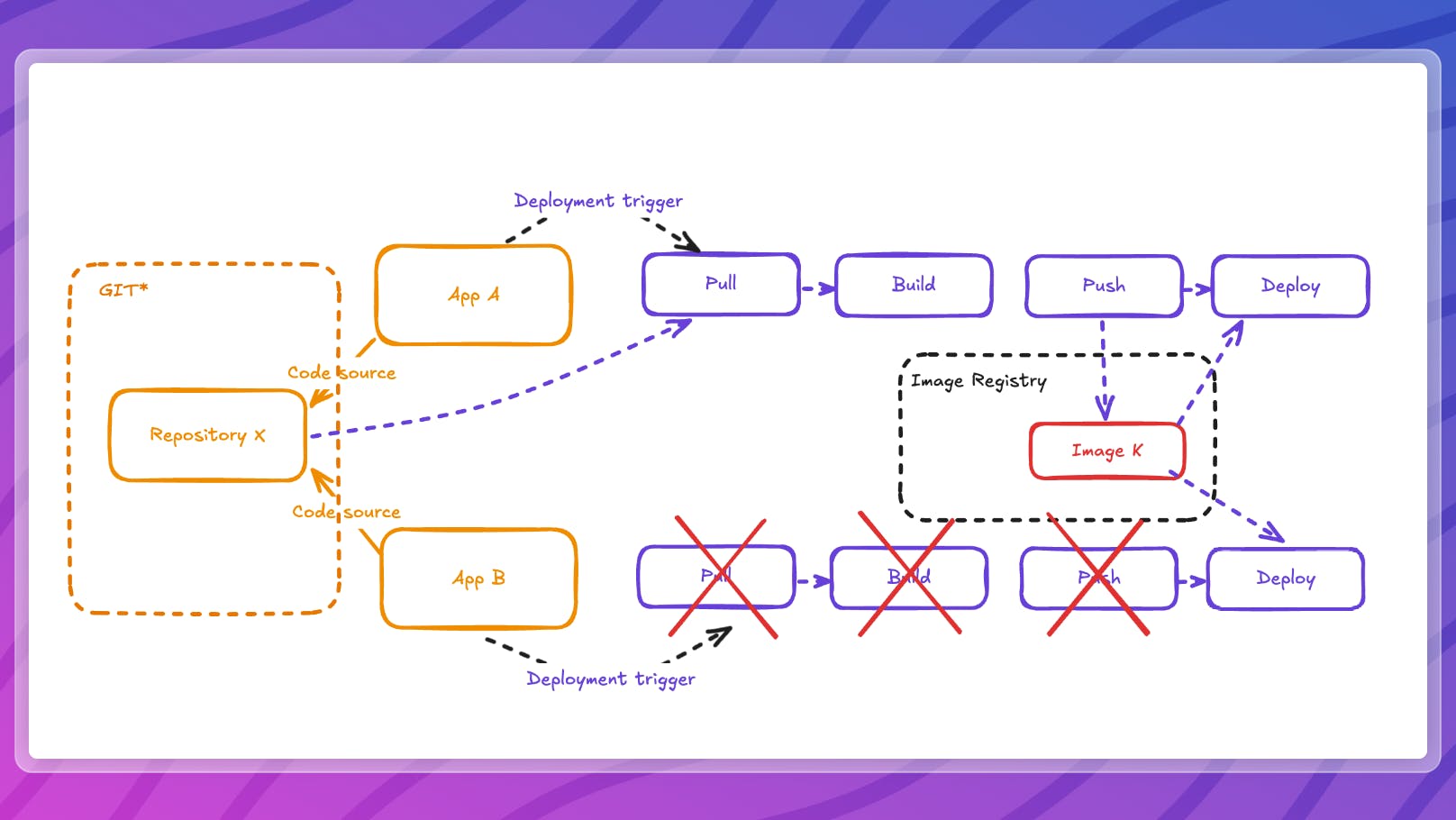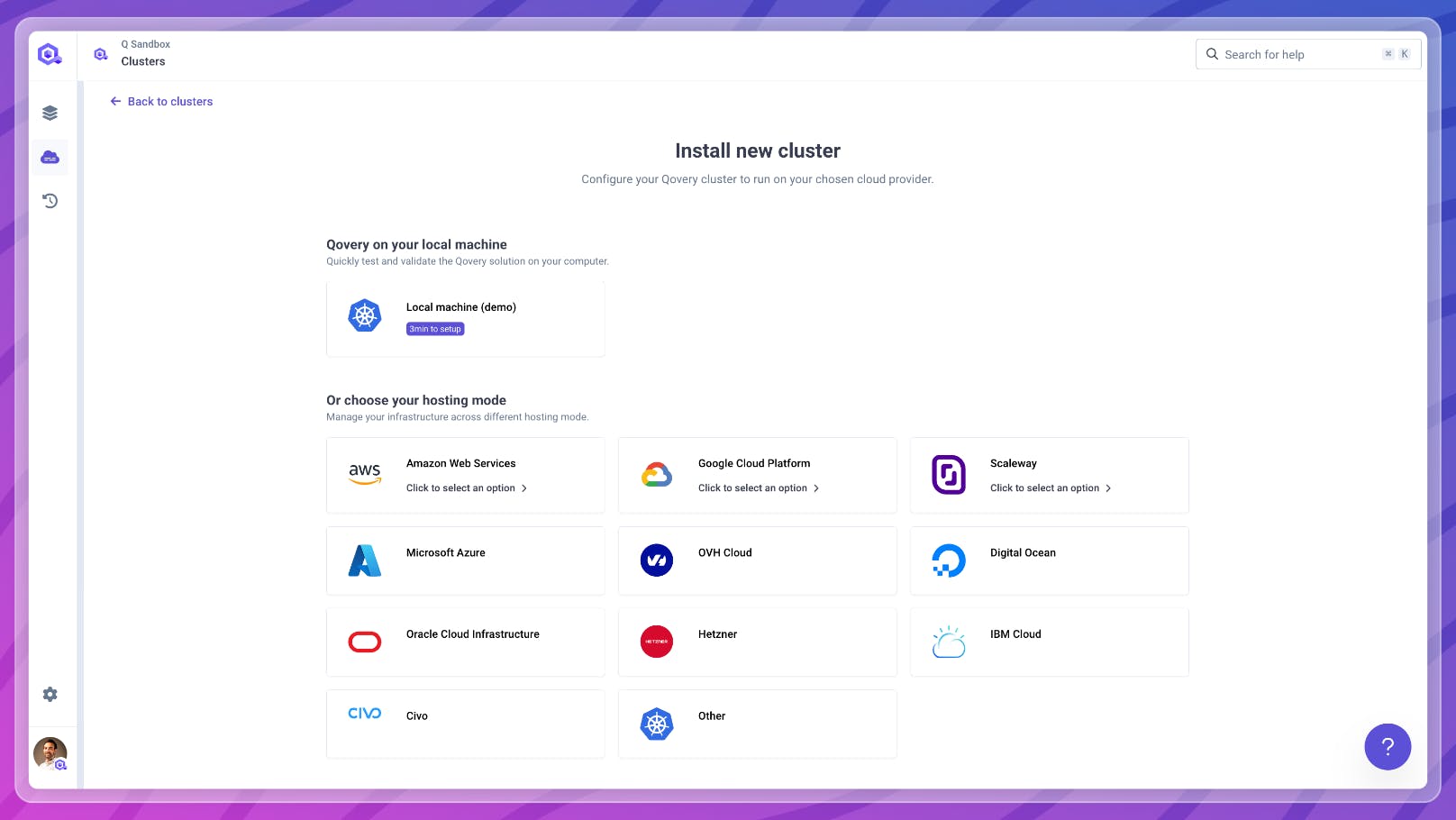Improved deployment logs, reduced build time, Karpenter 1.0, New cluster creation view
Hello Team,
We have been working hard over the past weeks to deliver you some exciting news on our product, check this out:
#Deployment logs - Better Visibility of The Deployment Steps
Every application deployed via Qovery goes through several steps, such as git clone, building, image push, etc.
To enhance visibility and provide better insights into the deployment pipeline, we are completely redesigning the deployment log interface. As the first step, we’ve separated the deployment process into two distinct phases: build and deployment. Each phase now has its own status and execution time displayed.
In this way, you'll be able to easily identify where the issue originates and if either of the two steps is taking longer than expected.
#Reduced Build Time by Sharing Images Across Applications
Applications built by Qovery are pushed to your container registry in your cloud account (or elsewhere for Self-Managed clusters), and you can find all the details here. Over the past weeks, we've been working on speeding up deployment times by enabling image reuse across applications within the same cluster, skipping the image build and push steps when possible.
Until last week, every application was built in complete isolation, making it impossible for application B to reuse an existing image built from application A, even if they referenced the same Git repository, Dockerfile, commit Id and root path. This required a new build for application A. With the latest release, this behaviour has changed, allowing application B to immediately use the image previously built for application A and thus reducing the overall deployment time.

This update has been globally released, and all Qovery customers can now benefit from faster deployments. We'll post an article soon to explain these changes and the improvements they've brought to the community.
#Karpenter 1.0
We've upgraded Karpenter to its latest major version (1.0) to ensure we deliver the newest features (more details are available on the Karpenter blog).
We're also working on enhancing its flexibility by allowing you to choose the types of instances to run on your cluster. Check out this post from Julien for additional information.
Remember, you can already activate Karpenter on your non-production clusters and take advantage of features like spot instances!
#New Cluster Creation View
We've revamped the cluster creation view to better highlight our multi-cloud capabilities and guide you more effectively through the configuration process.

The new interface is similar to the one used for creating a new service, allowing you to easily select your hosting solution and choose between a Qovery-managed or self-managed cluster.
#Minor Changes:
- Fetching images from private container registries: we've added the ability to fetch both the image name and version when referencing a private container registry, making it easier to manage your container images.
- Variables interpolation helper: we’ve introduced the variable interpolation helper in the environment variable setup, making it effortless to reuse existing environment variables during configuration.
- Kubernetes 1.29 upgrade: all preparatory work for the Kubernetes 1.29 upgrade is complete. We'll be sending out communication soon with the upgrade timeline.
For the latest news and upcoming features, remember to check out changelog.qovery.com.
As always, we appreciate your feedback and support.
Happy Deploying!
The Qovery Team 🚀

